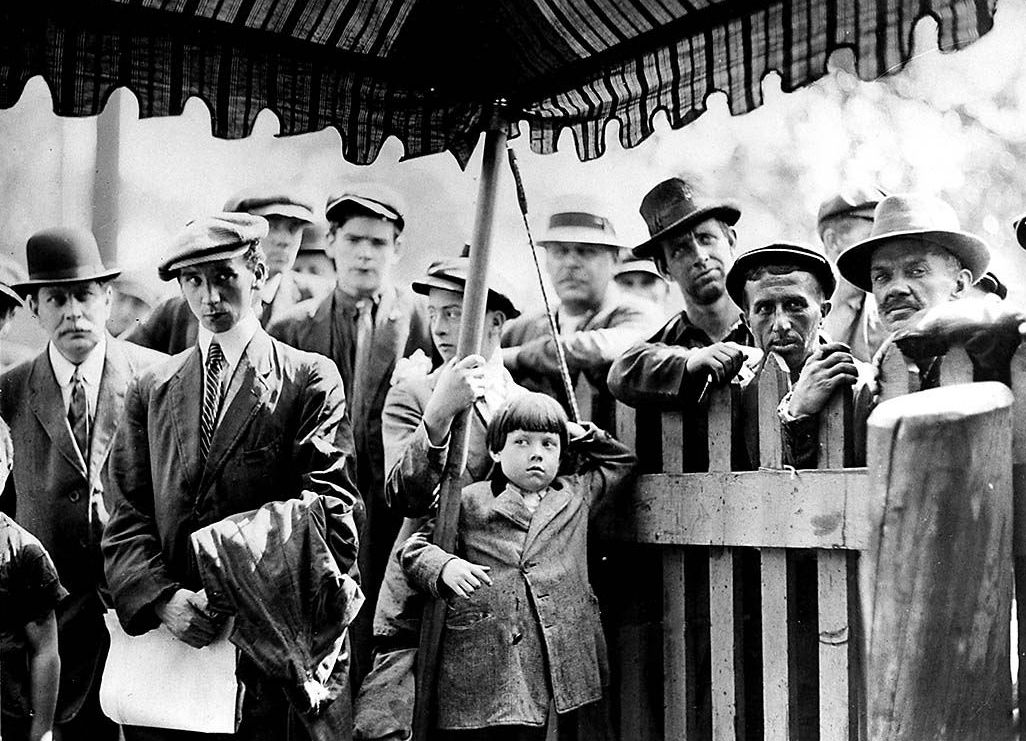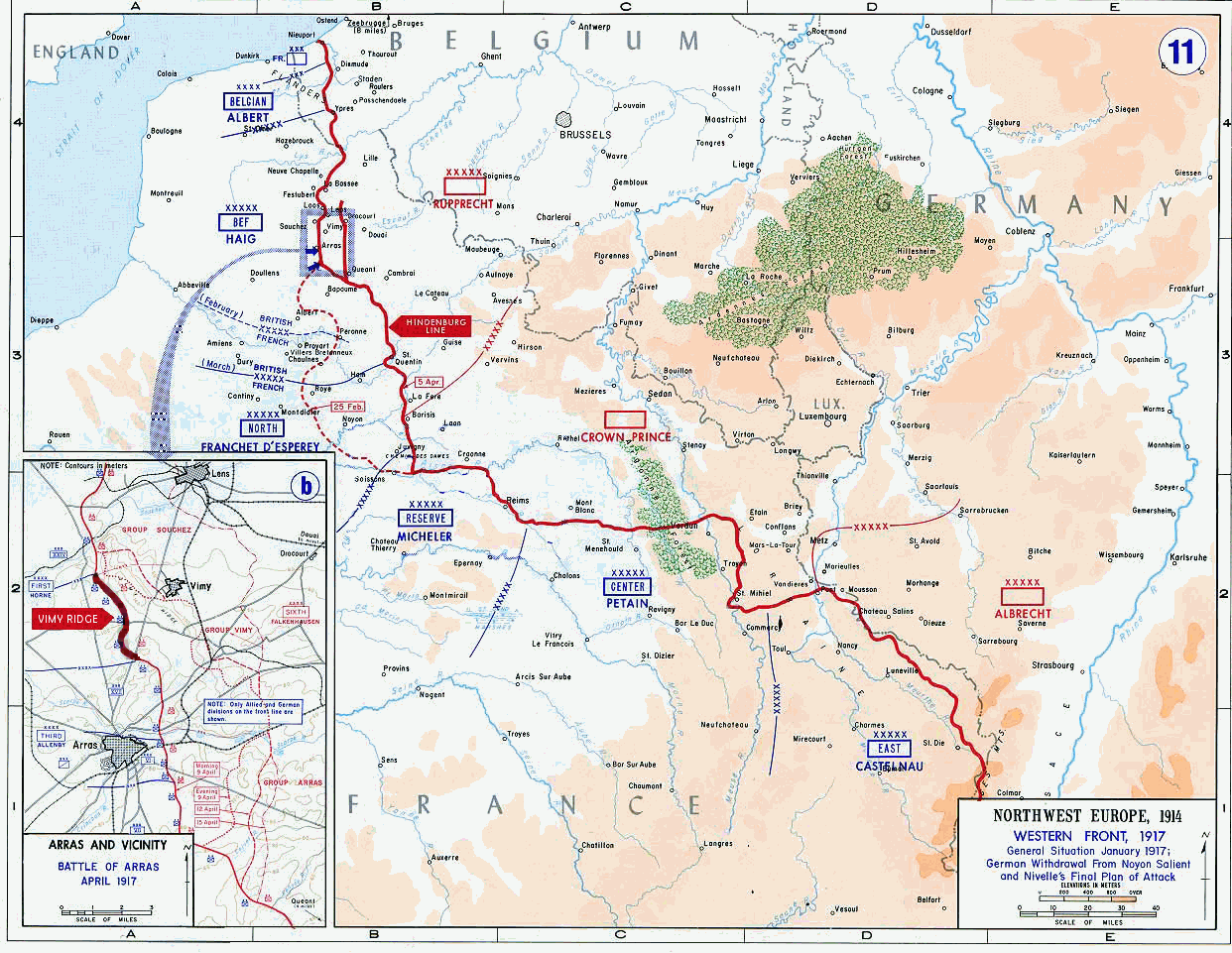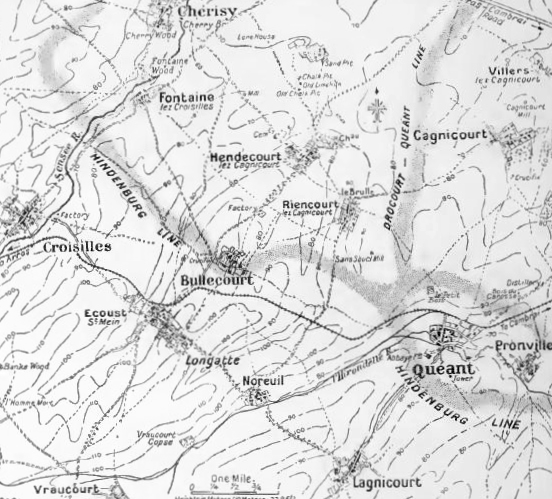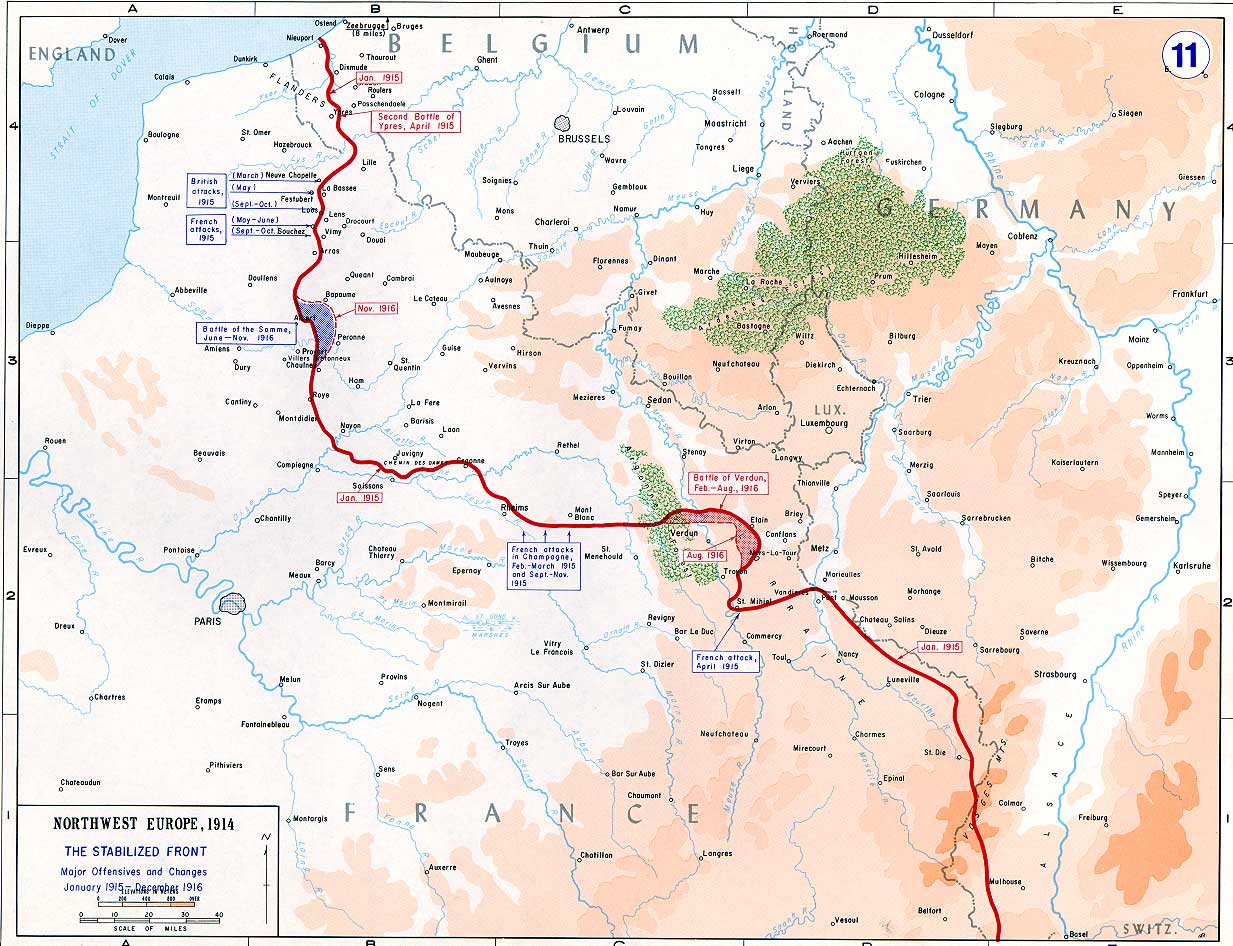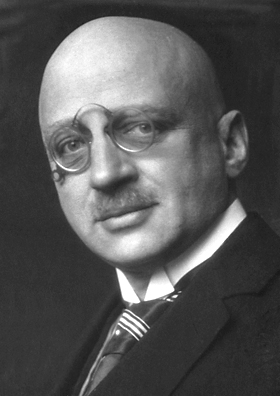|
4th (Central Ontario) Battalion, CEF
4th (Central Ontario) Battalion, CEF was an infantry battalion raised as part of the Canadian Expeditionary Force for service during the First World War. Raised in Canada in September 1914, the battalion sailed to the United Kingdom within weeks of its establishment. After a short period of training it was committed to the fighting on the Western Front, remaining in France and Belgium until the war ended. It returned to Canada in mid-1919 and after its personnel had been demobilized, the battalion was subsequently disbanded in 1920. History The 4th Battalion of the Canadian Expeditionary Force was raised at Valcartier on 2 September 1914. Consisting of recruits from the 2nd Military District, which encompassed Aurora, Brampton, Brantford, Hamilton and Niagara Falls, the battalion's first commanding officer Lieutenant-Colonel W.S. Buell, although he was replaced by Lieutenant-Colonel R.H. Labatt after only a short period in command. Within several weeks of its formation, the bat ... [...More Info...] [...Related Items...] OR: [Wikipedia] [Google] [Baidu] [Amazon] |
Canadian Expeditionary Force
The Canadian Expeditionary Force (CEF; French: ''Corps expéditionnaire canadien'') was the expeditionary warfare, expeditionary field force of Canada during the First World War. It was formed on August 15, 1914, following United Kingdom declaration of war upon Germany (1914), Britain’s declaration of war on the German Empire, with an initial strength of one infantry Division (military), division. The division subsequently fought at Second Battle of Ypres, Ypres on the Western Front (World War I), Western Front, with a newly raised second division reinforcing the committed units to form the Canadian Corps. The CEF and corps was eventually expanded to four infantry divisions, which were all committed to the fighting in France and Belgium along the Western Front. A fifth division was partially raised in 1917, but was broken up in 1918 and used as reinforcements following heavy casualties. Personnel Recruitment The CEF was mostly volunteers; a bill allowing conscription was pa ... [...More Info...] [...Related Items...] OR: [Wikipedia] [Google] [Baidu] [Amazon] |
3rd Canadian Reserve Battalion
Third or 3rd may refer to: Numbers * 3rd, the ordinal form of the cardinal number 3 * , a fraction of one third * 1⁄60 of a ''second'', i.e., the third in a series of fractional parts in a sexagesimal number system Places * 3rd Street (other) * Third Avenue (other) * Highway 3 Music Music theory *Interval number of three in a musical interval **Major third, a third spanning four semitones **Minor third, a third encompassing three half steps, or semitones **Neutral third, wider than a minor third but narrower than a major third **Augmented third, an interval of five semitones **Diminished third, produced by narrowing a minor third by a chromatic semitone *Third (chord), chord member a third above the root *Degree (music), three away from tonic **Mediant, third degree of the diatonic scale **Submediant, sixth degree of the diatonic scale – three steps below the tonic **Chromatic mediant, chromatic relationship by thirds *Ladder of thirds, similar to the ci ... [...More Info...] [...Related Items...] OR: [Wikipedia] [Google] [Baidu] [Amazon] |
Battle Of The Scarpe (1918)
The Battle of the Scarpe was a World War I battle that took place during the Hundred Days Offensive between 26 and 30 August 1918. 26 August The Canadian Corps advanced over 5 kilometres and captured the towns of Monchy-le-Preux and Wancourt. Lieutenant Charles Smith Rutherford VC MC MM from the 5th Canadian Mounted Rifles of the 3rd Canadian Infantry Division performed actions that earned him the Victoria Cross The Victoria Cross (VC) is the highest and most prestigious decoration of the Orders, decorations, and medals of the United Kingdom, British decorations system. It is awarded for valour "in the presence of the enemy" to members of the British .... He captured a German party of 45, including two officers and three machine-guns, then captured another pillbox along with another 35 prisoners and their guns. 27 August Heavy rains during the night resulted in slippery ground, difficulties in assembling troops and late starts for the assaults. Stiff resistance from ... [...More Info...] [...Related Items...] OR: [Wikipedia] [Google] [Baidu] [Amazon] |
Battle Of Vimy Ridge
The Battle of Vimy Ridge was part of the Battle of Arras, in the Pas-de-Calais department of France, during the First World War. The main combatants were the four divisions of the Canadian Corps in the First Army, against three divisions of the German 6th Army. The battle occurred from 9 to 12 April 1917, marking the commencement of the Battle of Arras and serving as the inaugural assault of the Nivelle Offensive. The objective was to draw German reserves away from the French forces, preparing for a crucial offensive along the Aisne and the Chemin des Dames ridge several days later. The Canadian Corps was to capture the German-held high ground of Vimy Ridge, an escarpment on the northern flank of the Arras front. This would protect the First Army and the Third Army farther south from German enfilade fire. Supported by a creeping barrage, the Canadian Corps captured most of the ridge during the first day. The village of Thélus fell during the second day, as did the cre ... [...More Info...] [...Related Items...] OR: [Wikipedia] [Google] [Baidu] [Amazon] |
Battle Of Arras (1917)
The Battle of Arras, also known as the Second Battle of Arras, was a British offensive on the Western Front (World War I), Western Front during the First World War. From 9 April to 16 May 1917, British troops attacked German defences near the French city of Arras on the Western Front. The British achieved the longest advance since trench warfare had begun, surpassing the record set by the French Sixth Army (France), Sixth Army on 1 July 1916. The British advance slowed in the next few days and the German defence recovered. The battle became a costly stalemate for both sides and by the end of the battle, the British Third Army (United Kingdom), Third Army and the First Army (United Kingdom), First Army had suffered about 160,000 casualties and the German 6th Army (German Empire), 6th Army about 125,000. For much of the war, the opposing armies on the Western Front were at a stalemate, with a continuous line of Trench warfare, trenches from the Belgian coast to the France-Switzerla ... [...More Info...] [...Related Items...] OR: [Wikipedia] [Google] [Baidu] [Amazon] |
Ancre Heights
The Ancre (; ) is a river of Picardy, France. Rising at Miraumont, a hamlet near the town of Albert, it flows into the Somme at Corbie. It is long. For most of its length it flows through the department of Somme. For a short stretch near Puisieux, it forms the border with Pas-de-Calais. See also * Battle of the Ancre Heights (October 1916) * Battle of the Ancre The Battle of the Ancre was fought by the British Fifth Army (Lieutenant-General Hubert Gough), against the German 1st Army (General Fritz von Below). The Reserve Army had been renamed the Fifth Army on 30 October. The battle was the las ... (November 1916) References Rivers of France Rivers of Somme (department) Rivers of the Pas-de-Calais Rivers of Hauts-de-France {{France-river-stub ... [...More Info...] [...Related Items...] OR: [Wikipedia] [Google] [Baidu] [Amazon] |
Battle Of The Somme
The Battle of the Somme (; ), also known as the Somme offensive, was a battle of the First World War fought by the armies of the British Empire and the French Third Republic against the German Empire. It took place between 1 July and 18 November 1916 on both sides of the upper reaches of the river Somme (river), Somme in France. The battle was intended to hasten a victory for the Allies of World War I, Allies. More than three million men fought in the battle, of whom more than one million were either wounded or killed, making it one of the List of battles by casualties, deadliest battles in human history. The French and British had planned an offensive on the Somme during the Chantilly Conferences, Chantilly Conference in December 1915. The Allies agreed upon a strategy of combined offensives against the Central Powers in 1916 by the French, Russian, British and Italian armies, with the Somme offensive as the Franco-British contribution. The French army was to undertake the m ... [...More Info...] [...Related Items...] OR: [Wikipedia] [Google] [Baidu] [Amazon] |
Mount Sorrel
The Battle of Mont Sorrel (Battle of Mount Sorrel) was a local operation in World War I by three divisions of the German 4th Army and three divisions of the British Second Army in the Ypres Salient, near Ypres in Belgium, from 2 to 13 June 1916. To divert British resources from the build-up being observed on the Somme, the XIII (Royal Württemberg) Corps and the 117th Infantry Division attacked an arc of high ground defended by the Canadian Corps in Flanders. The German forces captured the heights at Mount Sorrel and Tor Top, before entrenching on the far slope of the ridge. Following a number of attacks and counterattacks, two divisions of the Canadian Corps, supported by the 20th Light Division and Second Army siege and howitzer battery groups, recaptured the majority of their former positions. Background Mount Sorrel Located in the Ypres Salient, east of Ypres, Belgium and from Hill 60, the Battle of Mount Sorrel took place along a ridge between Hooge and Zwarte ... [...More Info...] [...Related Items...] OR: [Wikipedia] [Google] [Baidu] [Amazon] |
Battle Of Festubert
The Battle of Festubert (15–25 May 1915) was an attack by the British army in the Artois region of France on the western front during World War I. The offensive formed part of a series of attacks by the French Tenth Army and the British First Army in the Second Battle of Artois . After the failure of the breakthrough attempt by the First Army in the attack at Aubers Ridge (9 May 1915) tactics of a short hurricane bombardment and an infantry advance with unlimited objectives, were replaced by the French practice of slow and deliberate artillery-fire intended to prepare the way for an infantry attack. A continuous three-day bombardment by the British heavy artillery was planned, to cut wire and demolish German machine-gun posts and infantry strong points. The German defences were to be captured by a continuous attack, by one division from Rue du Bois to Chocolat Menier Corner and by a second division north, which was to capture the German trenches to the left of Festuber ... [...More Info...] [...Related Items...] OR: [Wikipedia] [Google] [Baidu] [Amazon] |
Battle Of St Julien
The Second Battle of Ypres was fought from 22 April – 25 May 1915, during the First World War, for control of the tactically-important high ground to the east and the south of the Flemish town of Ypres, in western Belgium. The First Battle of Ypres had been fought the previous autumn. The Second Battle of Ypres was the first mass use by Germany of poison gas on the Western Front. Background The German chemist Walther Nernst, who in 1914 was a volunteer driver, proposed to Colonel Max Bauer, the German general staff officer responsible for liaison with scientists, that they could empty the opposing trenches by a surprise attack with tear gas. Observing a field test of this idea, the chemist Fritz Haber instead proposed using heavier-than-air chlorine gas. The German commander Erich von Falkenhayn agreed to try the new weapon but intended to use it in a diversionary attack by the 4th Army. Falkenhayn wanted to use the gas to cover the transfer of Imperial German Army un ... [...More Info...] [...Related Items...] OR: [Wikipedia] [Google] [Baidu] [Amazon] |
